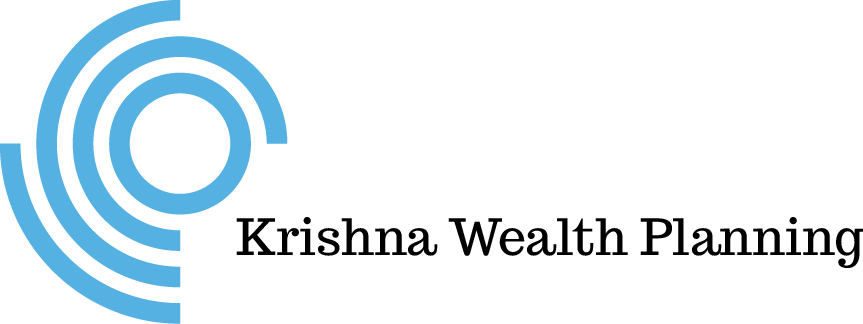6-Minute Read
As schools and colleges resume classes, I often assist individuals with separating truth from fiction regarding college 529 plans.
You may be uncertain about using a 529 plan, wondering what will happen if the money is not used for educational expenses. This is a legitimate concern, as your child may not attend college, receive scholarships, or have an account that exceeds college costs.
You may have more options available than you think!
This piece will offer a brief summary of tax regulations and explore three potential options for an overfunded college 529 plan: transferring the beneficiary, using it for the next generation’s education, or finding other ways to use the funds.
Background on the 529 Plan Tax Rules
Firstly, let’s discuss the income tax implications of using a 529 plan, which is often a primary concern for many individuals.
Contributions and Earnings
When you contribute to a 529 plan, you won’t receive an immediate federal tax benefit or deduction. However, if you live in a state with a state income tax, you may be eligible for a state tax benefit.
The tax benefits associated with 529 plans accrue slowly, but powerfully over time. Your contributions and earnings in a 529 plan will grow tax-deferred at federal and state levels, similar to traditional retirement accounts like 401ks and IRAs.
Distributions
Things get more interesting when you distribute money from a 529 plan. Qualified withdrawals are tax-free at both the federal and in most cases the state levels. The most common qualified expenses include tuition, fees, books, supplies, computers, and room and board costs (within limits). The IRS Pub 970 has a complete list of qualified expenses.
Your best practice is to make ONLY qualified withdrawals from a 529 plan. If you can do this, the tax-free treatment makes 529 plans similar to Roth IRAs.
If a distribution is non-qualified, it is subject to an income tax and a 10 percent penalty at the federal level. Your state may also impose an income tax, a penalty, or recapture of previously claimed tax benefits. Non-qualified distributions apply to any growth or earnings from the account.
There are some exceptions to the 10 percent penalty, which we’ll cover later. A corollary best practice: Avoid non-qualified distributions if possible.
This all leads to the question: What do you do if you cannot use assets in a 529 plan for qualified college expenses? Let’s look at three options to consider.
One – Changing the Beneficiary of a 529 Plan
If you own or will own a 529 plan, you will have control over the account. As the owner, it will be your responsibility to invest the funds and decide when or if distributions will be made.
Your child is likely the beneficiary of the 529 plan account, and they will be the one to benefit from the distributed funds. It’s important to know that you can change the beneficiary to an eligible family member or a trust without any tax penalties or consequences.
The list of eligible family members is extensive and includes siblings, parents, children, uncles, aunts, cousins, in-laws, nieces, and nephews. To view the complete list, refer to Pub 970.
For example, if you have multiple children planning to attend college, you can fund the 529 plan for the oldest child. If they don’t need all the funds, you can change the beneficiary to one of your younger children. If your youngest child has funds left in the 529 after graduation, you can even change the beneficiary back to yourself or your spouse.
To change the beneficiary, you need to follow the specific process required by your plan’s administrator, which is usually a straightforward process consisting of a few simple steps. Some plans may require forms, while others may allow you to make the change online.
Two – Using a 529 Plan for the Next Generation
If you’re considering providing educational benefits for future family members, then you might view college 529 plans in a different light. Overfunding a 529 plan can actually be desirable, rather than an obstacle. This is sometimes called a dynasty 529 plan.
Unlike tax-advantaged accounts like a 401k or IRA, 529 plans don’t have contribution limits or required minimum distributions. However, there are a few things to keep in mind:
- If you contribute more than the annual gift tax exclusion to a single beneficiary, you may need to file a gift tax return. But you may not have to pay an actual gift tax. There are exceptions, such as “superfunding” a 529 plan with five years’ worth of annual exclusion gifts.
- Each state’s 529 plan has a different maximum balance. Brianna McGurran nicely summarized this in her Forbes Once the plan reaches that balance, you can’t contribute anymore. But it can still grow naturally through earnings growth.
Overall, a dynasty 529 plan can be a long-term investment vehicle that grows tax-deferred and tax-free for multiple generations. The compounding effects can be powerful.
Still, you might hesitate to go down this path. The rules on 529 plans could change in the future. However, as Jeffrey Levine pointed out in a recent webinar, Congress has trended towards making 529 plans more flexible over the years, not less.
You will also need the cooperation of the next generation for it to work effectively. Trust-owned 529 plans may be a solution to this issue.
Three – Alternative Uses of a 529 Plan
While there are some standard exceptions to the 10 percent penalty for 529 plan distributions – like if the beneficiary passes away, becomes disabled, receives a scholarship, or enrolls in a military academy – there are a few other exceptions that are often missed. Let’s explore those now.
K-12 Education
Did you know that you can use a 529 plan to pay for a portion of your child’s K-12 education, whether they attend a public, private, or religious school? This is a great option to consider if your child hasn’t started college yet and you’re worried about overfunding the plan.
You can withdraw up to $10,000 per year per beneficiary for K-12 expenses, which is a recent addition to the qualified expense category.
However, it’s important to note that not all states allow tax-free withdrawals for K-12 expenses, so make sure to check your state’s rules. Additionally, withdrawing more than the annual limit for K-12 education may result in federal income tax and a 10% penalty, so try to avoid this if possible.
Student Loan Payments
Many college students often rely on student loans to cover their expenses. Hopefully investing in a 529 plan can potentially decrease the need for your child to take out loans in the future.
Even if you have enough funds to cover all college expenses, taking out student loans, like the Federal Stafford loans, can help your child establish a credit history before entering the workforce.
Furthermore, 529 plan assets can be used to pay off qualified education loans’ principal or interest, up to $10,000 per beneficiary over their lifetime. This limit applies to each individual instead of each account and extends to the beneficiary’s siblings.
Financial aid expert Mark Kantrowicz, in an article for The College Investor, explains the specific restrictions and limits on the types of student loans that qualify.
Roth IRA Funding
In 2024, individuals can transfer some funds from an unused 529 plan directly to a Roth IRA, thanks to recent tax law changes.
This could be highly advantageous since Roth IRA distributions are tax-free and can be used for any purpose, unlike 529 plans that limit you to qualified education expenses. However, additional guidance from the IRS and state-level authorities may be necessary to clarify the specifics. Below are some essential rules that we know right now:
- The beneficiary of the 529 plan and the owner of the Roth IRA must be the same person.
- The Roth IRA income restriction will not apply to this transfer, but the owner must have earned income to be eligible.
- The 529 plan must have been in existence for at least 15 years.
- This implies that you may want to open a 529 plan as soon as possible if you haven’t already, given the lengthy “marination” period.
- It is presumed that you can change the beneficiary back to yourself without affecting the 15-year rule.
- The converted amounts (contributions and earnings) must have been in the account for at least five years.
- There is a maximum lifetime limit of $35,000 converted per beneficiary.
If you have comments or questions on this piece, please drop me a line at: [email protected]
References
- https://krishnawealth.com/enhancing-your-college-savings-529-plan-experience/
- https://www.irs.gov/forms-pubs/about-publication-970
- https://www.irs.gov/businesses/small-businesses-self-employed/frequently-asked-questions-on-gift-taxes
- https://www.forbes.com/advisor/student-loans/529-limits-by-state/
- https://www.kitces.com/member/webinars/advanced-529-planning-529-to-roth-dynasty-529-and-other-hnw-opportunities/
- https://studentaid.gov/understand-aid/types/loans/subsidized-unsubsidized
- https://thecollegeinvestor.com/39468/529-plan-for-student-loan-repayment/
The information on this site is provided “AS IS” and without warranties of any kind either express or implied. To the fullest extent permissible pursuant to applicable laws, Krishna Wealth Planning LLC (referred to as “KWP”) disclaims all warranties, express or implied, including, but not limited to, implied warranties of merchantability, non-infringement, and suitability for a particular purpose.
KWP does not warrant that the information will be free from error. None of the information provided on this website is intended as investment, tax, accounting or legal advice, as an offer or solicitation of an offer to buy or sell, or as an endorsement of any company, security, fund, or other securities or non-securities offering. The information should not be relied upon for purposes of transacting securities or other investments. Your use of the information is at your sole risk. Under no circumstances shall KWP be liable for any direct, indirect, special or consequential damages that result from the use of, or the inability to use, the materials in this site, even if KWP or a KWP authorized representative has been advised of the possibility of such damages.
In no event shall KWP have any liability to you for damages, losses, and causes of action for accessing this site. Information on this website should not be considered a solicitation to buy, an offer to sell, or a recommendation of any security in any jurisdiction where such offer, solicitation, or recommendation would be unlawful or unauthorized.




